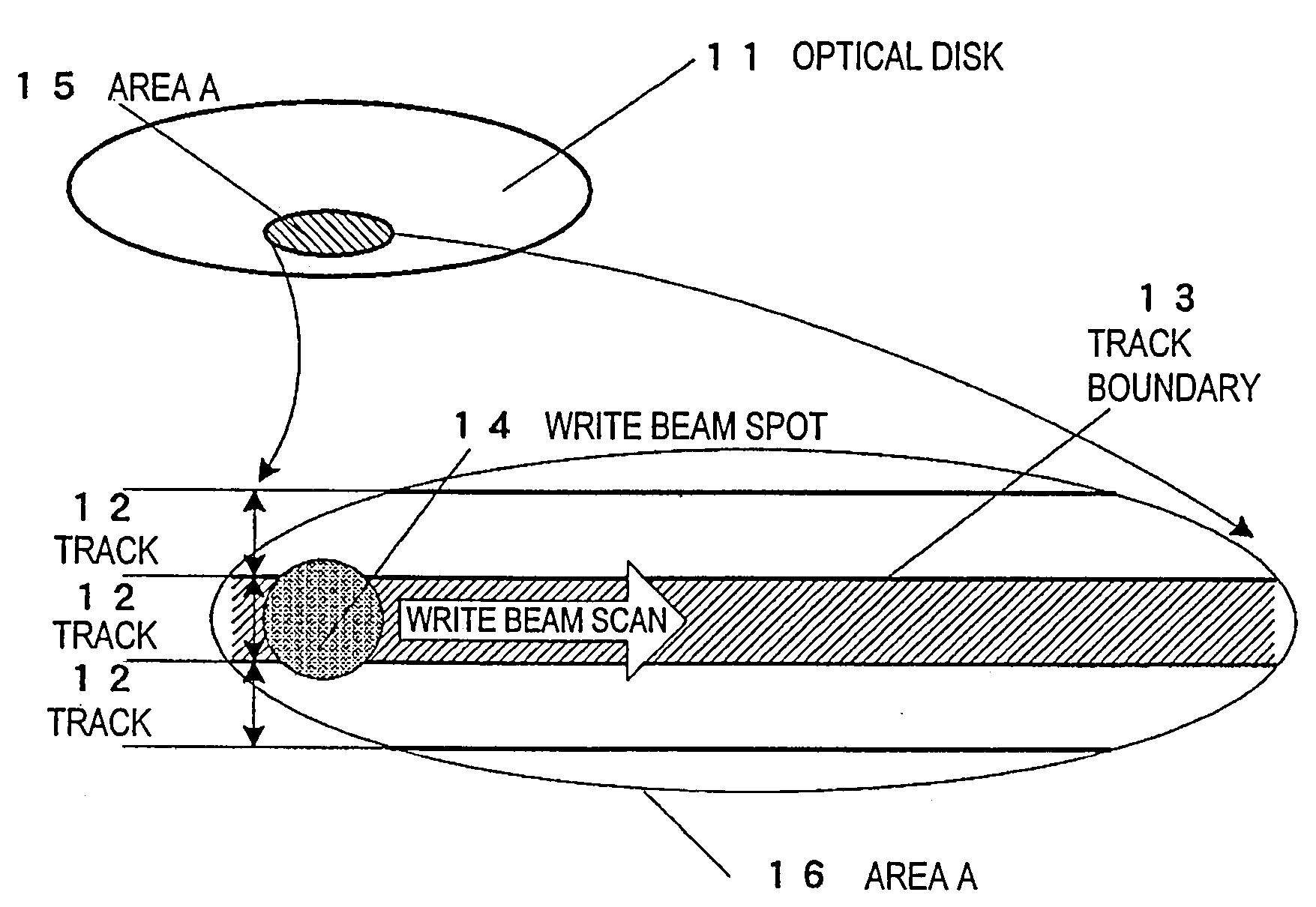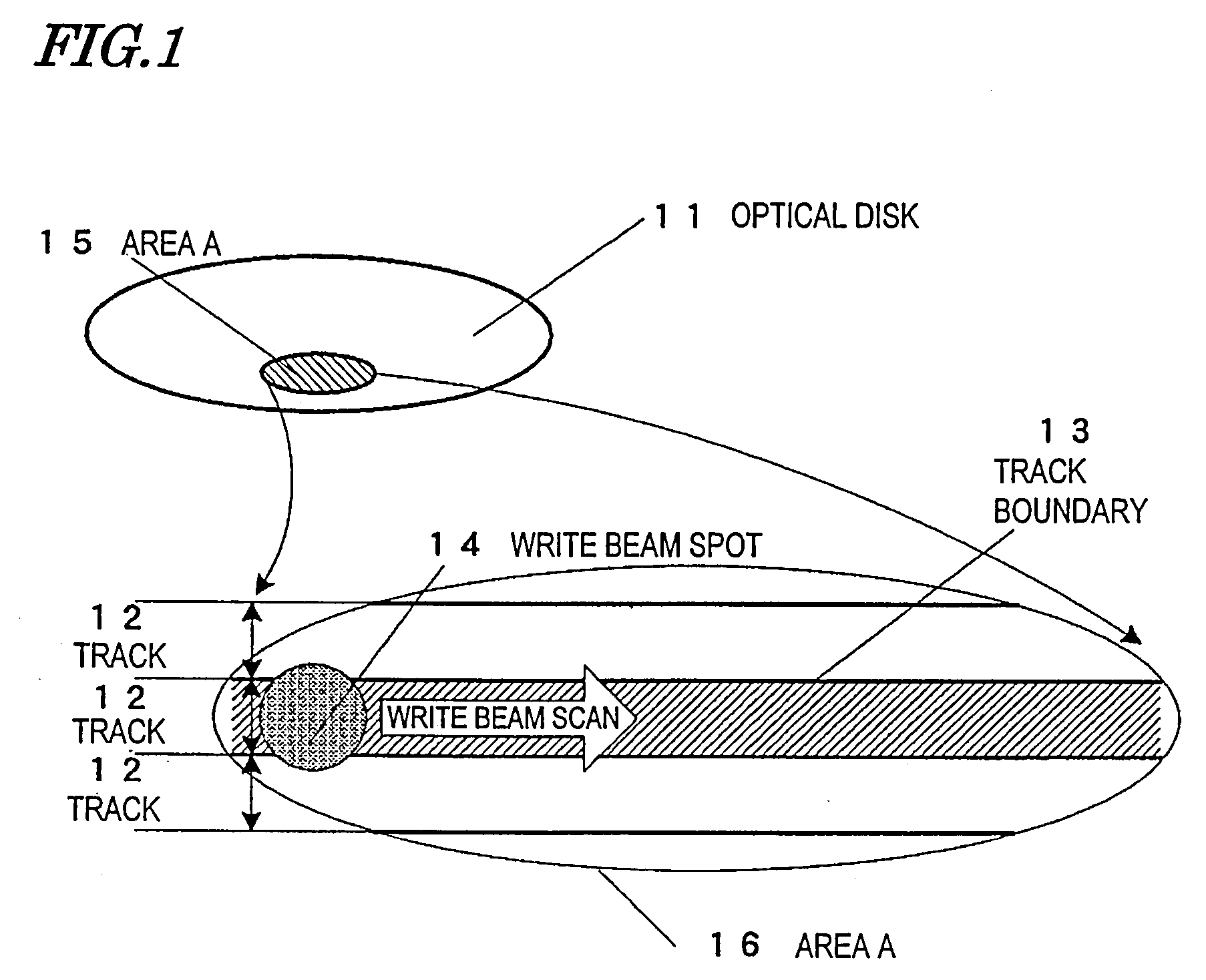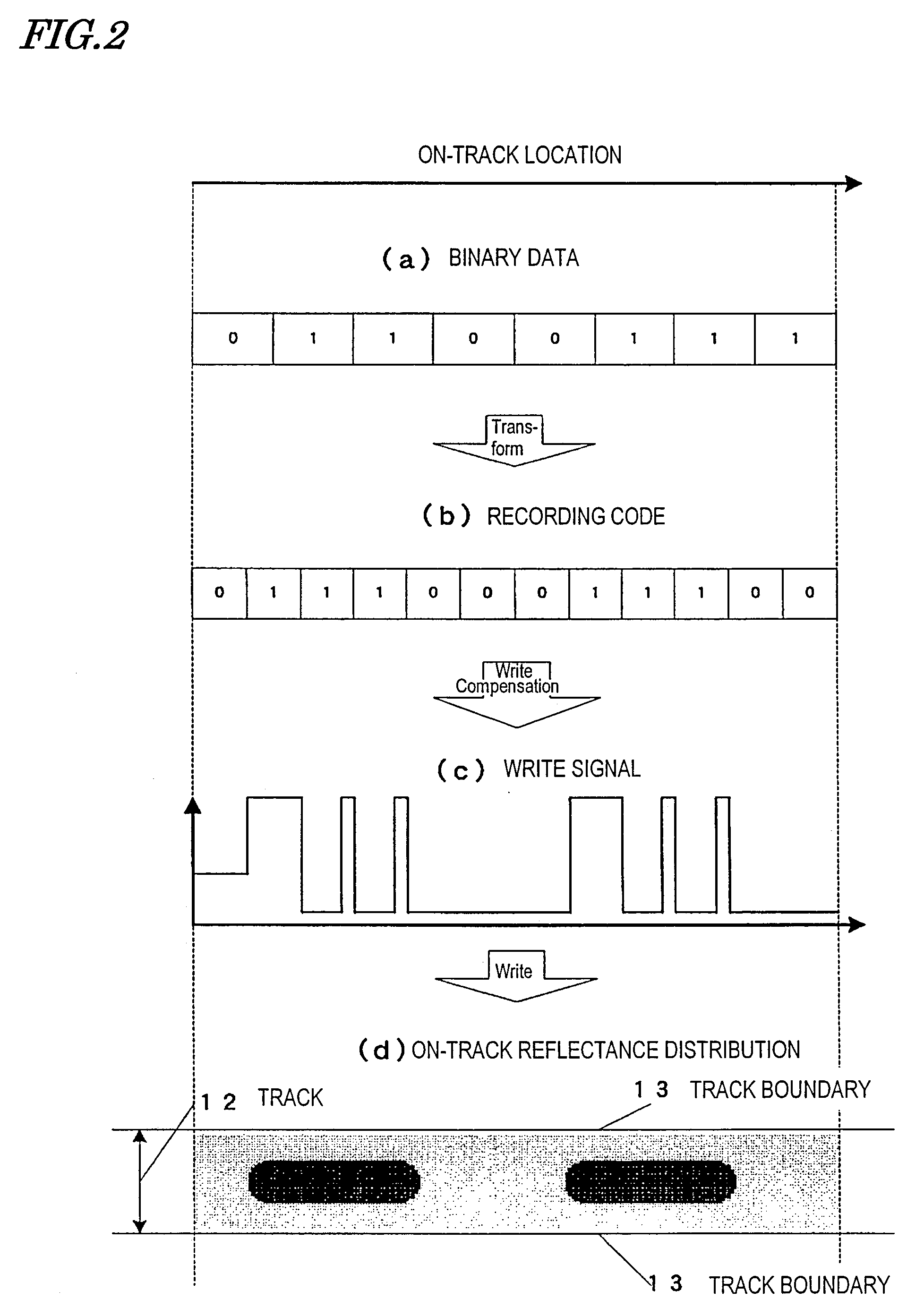Recorder, Player, and Recorder/Player
- Summary
- Abstract
- Description
- Claims
- Application Information
AI Technical Summary
Benefits of technology
Problems solved by technology
Method used
Image
Examples
Embodiment Construction
[0271]Hereinafter, preferred embodiments of the present invention will be described with reference to the accompanying drawings.
[0272]Portion (a) of FIG. 6 shows the format of an information storage medium according to a preferred embodiment of the present invention, which may be an optical disk medium, for example. The optical disk medium 61 shown in portion (a) of FIG. 6 includes a base material 67a and at least one recording layer 67. The recording layer 67 is arranged on the base material 67a. In the example illustrated in FIG. 6, the optical disk medium 61 includes a plurality of recording layers 67.
[0273]The recording layer 67 is made of a photon mode recording material with almost no threshold value. Also, the recording layer 67 has an optical constant that changes continuously with the total quantity of light received. For example, the variation in the optical constant of the recording material may be substantially a function (e.g., a liner function or a quadratic function) ...
PUM
 Login to View More
Login to View More Abstract
Description
Claims
Application Information
 Login to View More
Login to View More - R&D
- Intellectual Property
- Life Sciences
- Materials
- Tech Scout
- Unparalleled Data Quality
- Higher Quality Content
- 60% Fewer Hallucinations
Browse by: Latest US Patents, China's latest patents, Technical Efficacy Thesaurus, Application Domain, Technology Topic, Popular Technical Reports.
© 2025 PatSnap. All rights reserved.Legal|Privacy policy|Modern Slavery Act Transparency Statement|Sitemap|About US| Contact US: help@patsnap.com



